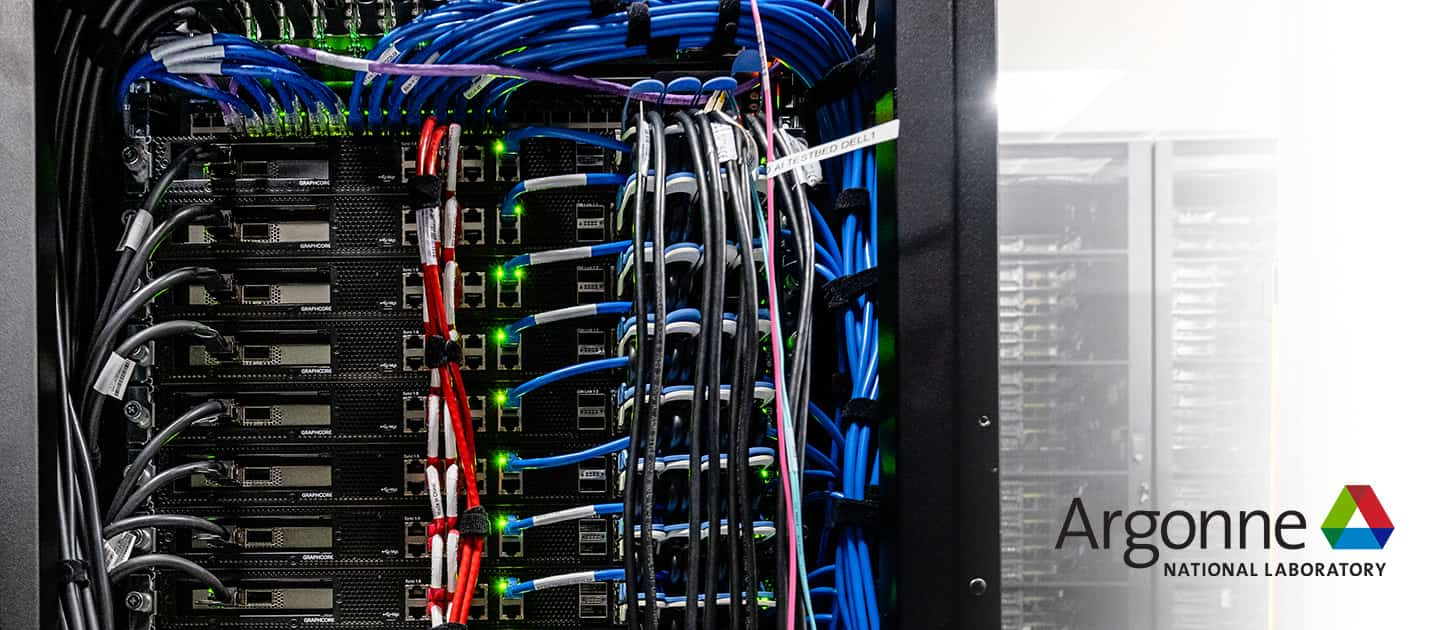The US Department of Energy’s Argonne National Laboratory is making the latest generation of Graphcore Bow IPUs available - for free - to scientific researchers around the world.
Access to Argonne’s 22 PetaFLOPS Bow Pod system is open to the global research community via an approved proposal submission. It follows a period of internal use by Argonne’s own teams, who applied IPUs to a range of AI tasks including modelling molecular behaviour and accelerating Graph Neural Networks.
This is the second Graphcore system to be installed at Argonne National Laboratory, which has previously offered Mk1 IPUs as part of the Argonne Leadership Computing Facility (ALCF).
Graphcore systems are also being used by US DoE’s Sandia National Laboratory, Oak Ridge National Laboratory and Pacific Northwest National Laboratory (PNNL).
“Argonne National Laboratory is helping to advance open-science AI research around the world by providing access to a diverse range of compute technologies, including novel AI accelerators,” said Venkat Vishwanath, Data Science Team Lead at the ALCF.
“Graphcore IPUs have shown themselves to be a versatile tool, and we look forward to seeing what the global research community is able to achieve using the latest, more powerful, generation of Bow IPUs.”
GNN research
Argonne researchers have already used their Graphcore system to explore optimisation of Graph Neural Networks (GNNs), a model type known to be particularly well-suited to the IPU.
“With a focus on inference, my team is examining which GNN-specific operators or kernels, as a result of increasing numbers of parameters or batch sizes, can create computational bottlenecks that affect overall runtime,” said ALCF computer scientist Filippo Simini.
IPUs have previously been used by Sandia National Laboratory to accelerate the training of GNNs in computational chemistry.
Accelerating molecular science
Another Argonne team, led by computational scientist Logan Ward, used IPUs to carry out two types of computation that are important in particle physics.
In the first type, the team ran simulations of molecules under redox— calculating how much energy molecules can store when electrically charged. In the second, they trained a machine learning model that predicts the energy quantity.
“Our application ultimately combines the two computations together,” Ward said. “It uses the trained machine learning model to predict the outcomes of the redox calculations, such that it can run the calculations that identify molecules with the desired capacity for energy storage.”
“Graphcore enables shortened latency when cycling between the execution of a new calculation that yields additional training data and when that model is used to select the next calculation,” he explained.
Applications
Scientific researchers, both in the US and across the international research community, are invited to apply for use of Graphcore IPUs within the Argonne Leadership Computing Facility (ALCF), under the Director’s Discretionary Allocation Program.
More information about the ALCF AI Testbed can be found on their website.
